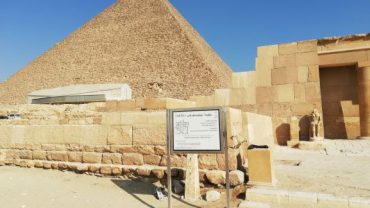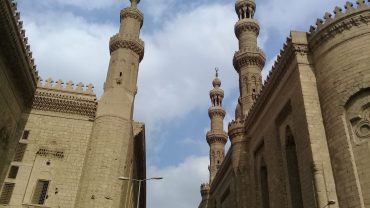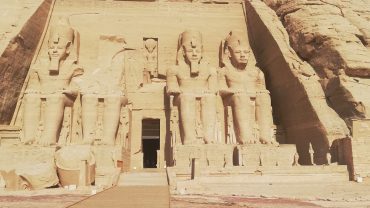Queen Hatshepsut is also known as Maatkare (1479-1457 B.C). She was the fifth ruler of the 18th Dynasty; she was the daughter of Thutmose I and Queen Ahmose Nefertari. Her brother was Thutmose II, who had a son Thutmose III, by a minor wife. When Thutmose II died in 1479 B.C, his son Thutmose III was appointed heir. However, Hatshepsut was appointed regent due to the boy’s young age. They ruled jointly until 1473 B.C. when she declared herself Pharaoh, she was not one to sit back and wait for her nephew to age enough to take her place. To have a female Pharaoh was unprecedented and definitely unheard of as well. Dressed in men’s attire Maatkare administered affairs of the nation, with the full support of the high priest of Amon, Hapuseneb, and other officials.
When she built her magnificent temple at El Deir El Bahari in Thebes, she made reliefs of her divine birth as the daughter of Amon. She left behind more monuments and works of art than any Egyptian queen to come. As a female Maatkare had many obstacles to overcome. There was always a threat of revolt, especially as her bitter nephew came of age. Using propaganda and keeping political skills, she deftly jumped each hurdle she faced. To quell the fears of her people, she became a king in all statuary and relief during her reign.
Hatshepsut dressed in the traditional garb of male rulers: the Shendyt kilt, the Nemes headdress with its uraeus and Khat headcloth, and the false beard. Although there were no wars during her reign, she proved her sovereignty by ordering expeditions to the land of Punt, in present-day Somalia, in the search of Ivory, animals, spices, gold, and aromatic trees that Egyptians coveted. These expeditions are well documented in the hieroglyphic inscriptions on the walls of her temple. These inscriptions are included incised representations of the journey, including humorous images of the Puntites and their queen. Too short, thin Egyptian she was probably quite a sight. In a final bid to be recognized as legitimate queens, she constructed a fabulous temple in the valley of the kings, of all places, by a tall plateau at El Deir El Bahari across the Nile from Thebes.
She was a master politician, and an elegant stateswoman with enough charisma to keep control of an entire country for twenty years. Her charisma and experience could carry her only so far, however. She used two devices to ensure the legitimacy of her position. The first was to emphasize not only her relationship to Tuthmose I but her favor from that popular ruler. She claimed to have been handpicked by her father, above her two brothers and her half-brother. In her temple are written the words of Khmum, the divine potter who sculpted the forms of gods: I will make you be the first of all living creatures, you will rise as ling of Upper and of Lower Egypt, as your Father Amon, who loves you, did ordain. She ruled the most powerful, advanced civilization in the world, successfully, for twenty years, her success stands for all eternity.
Hatshepsut disappeared in 1458 B.C. when Thutmose III, wishing to reclaim the throne, led a revolt. After her death, Thutmose had her shrines, statues, and reliefs mutilated, her sarcophagus was completely destroyed. The hard stone that had been covered for her funerary coffin was found in over 1200 pieces. Her mummy was never found. Only one of the canopic jars was found, the one containing her liver. After her death, Tuthmose III ordered the systematic erasure of her name from any monument she had built, including her temple at El Deir El Bahari. Since most of the images of her were actually males, it was convenient to simply change the name. Tuthmose III put his name in Hatshepsut’s place. Not only was Hatshepsut’s name erased, but some of her monuments were destroyed. She built two obelisks of red granite, the largest built to that point.
This was a continuation of the works of her father, who was not able to complete all his construction plans. Her name appeared on the obelisks, but instead of toppling them, Tuthmose III ordered them sheathed in masonry. Their gilded pyramidions were probably the only original elements to be exposed. Later, one of the obelisks was destroyed after all.
samegypt tours




Comment (0)